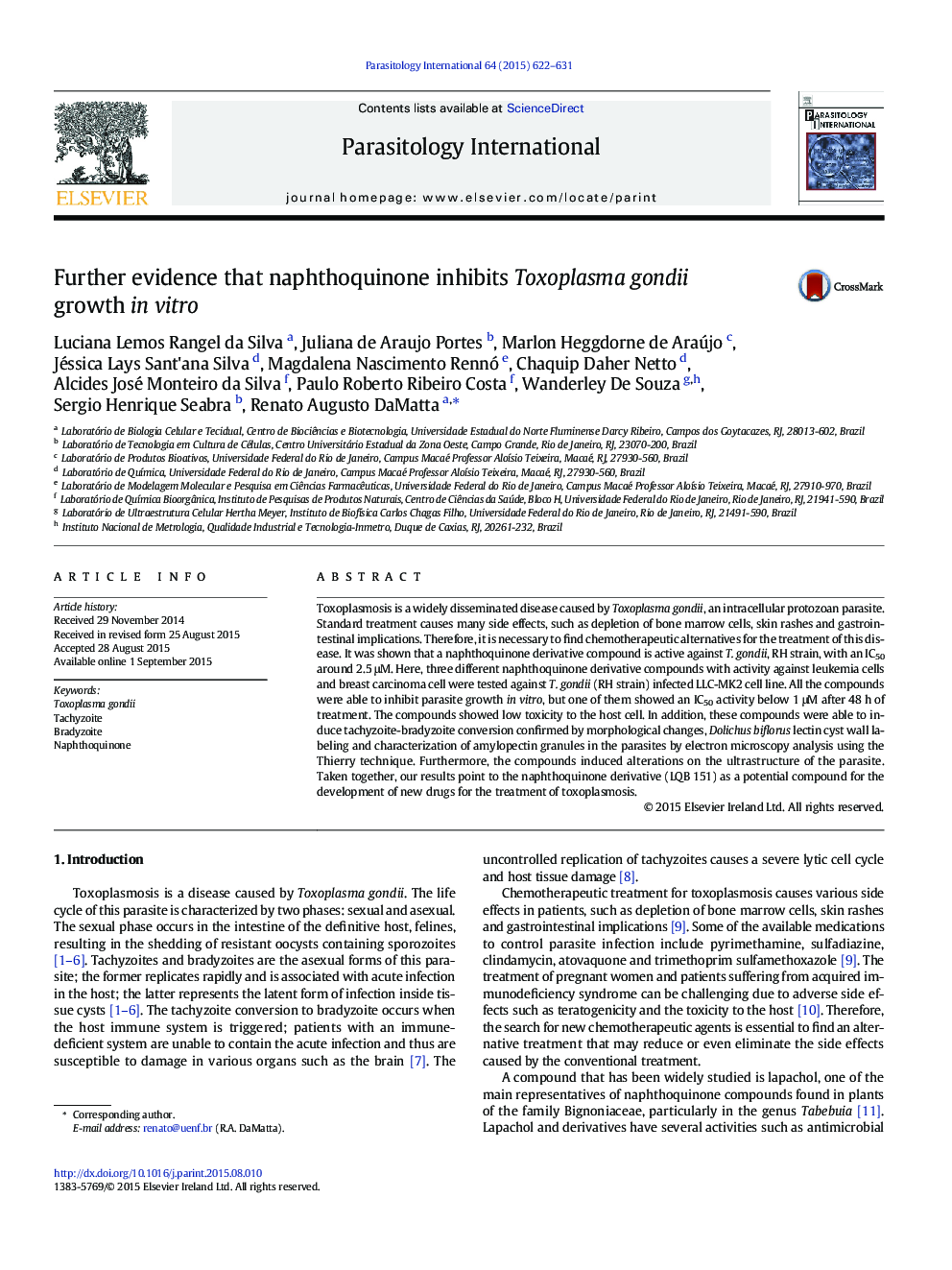| Article ID | Journal | Published Year | Pages | File Type |
|---|---|---|---|---|
| 3417784 | Parasitology International | 2015 | 10 Pages |
•Naphthoquinone derivative compound treatment control growth of Toxoplasma gondii in LLC-MK2 cell line•One of the compounds presented an IC50 at the nM range after 48 h of treatment.•Compounds induced tachyzoite-bradyzoite conversion.
Toxoplasmosis is a widely disseminated disease caused by Toxoplasma gondii, an intracellular protozoan parasite. Standard treatment causes many side effects, such as depletion of bone marrow cells, skin rashes and gastrointestinal implications. Therefore, it is necessary to find chemotherapeutic alternatives for the treatment of this disease. It was shown that a naphthoquinone derivative compound is active against T. gondii, RH strain, with an IC50 around 2.5 μM. Here, three different naphthoquinone derivative compounds with activity against leukemia cells and breast carcinoma cell were tested against T. gondii (RH strain) infected LLC-MK2 cell line. All the compounds were able to inhibit parasite growth in vitro, but one of them showed an IC50 activity below 1 μM after 48 h of treatment. The compounds showed low toxicity to the host cell. In addition, these compounds were able to induce tachyzoite-bradyzoite conversion confirmed by morphological changes, Dolichus biflorus lectin cyst wall labeling and characterization of amylopectin granules in the parasites by electron microscopy analysis using the Thierry technique. Furthermore, the compounds induced alterations on the ultrastructure of the parasite. Taken together, our results point to the naphthoquinone derivative (LQB 151) as a potential compound for the development of new drugs for the treatment of toxoplasmosis.
Graphical abstractFigure optionsDownload full-size imageDownload as PowerPoint slide
